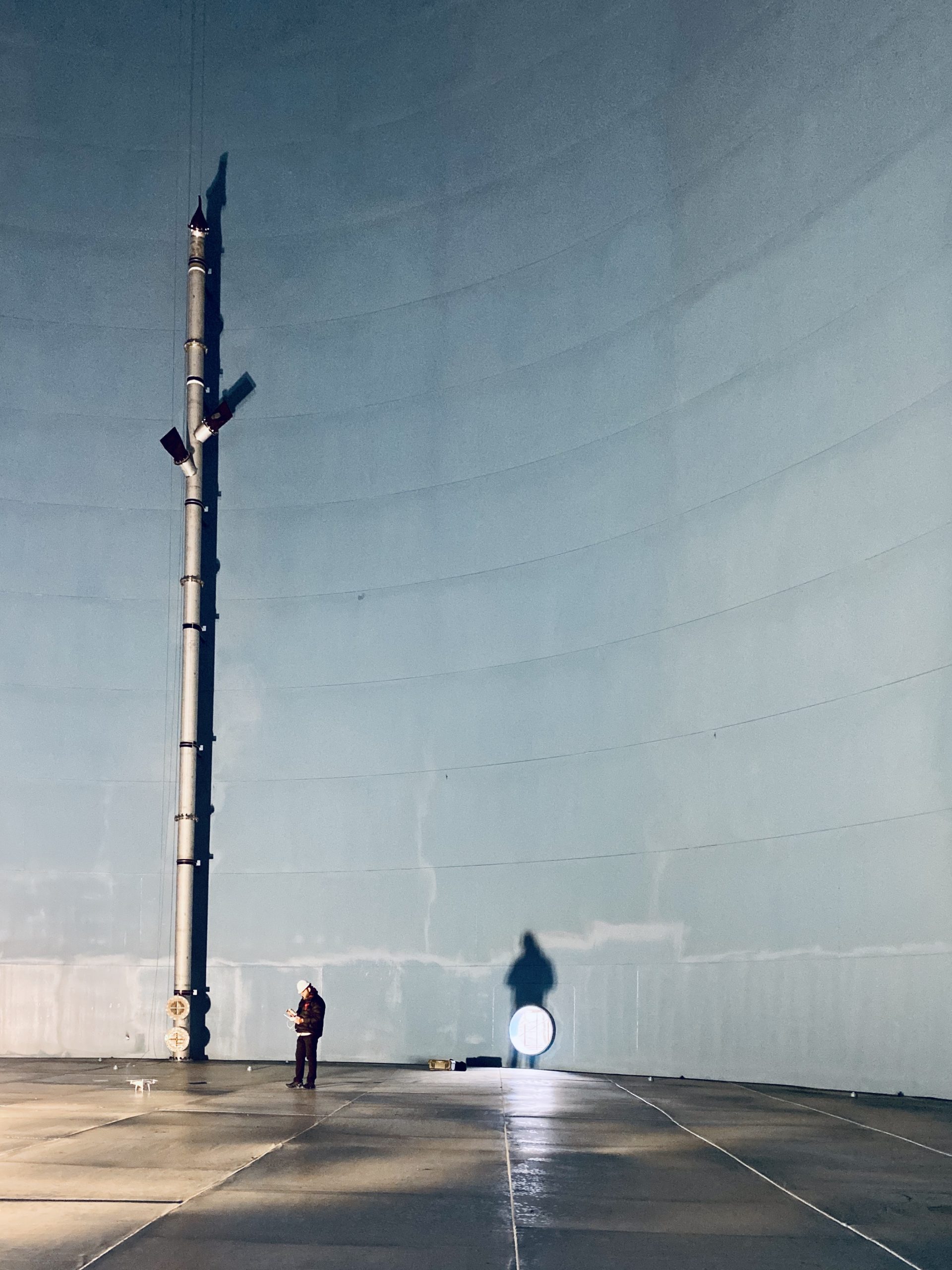By: Bill Seawell, Induron Technical Service Manager
 Water and wastewater treatment plants offer the greatest variety of coating needs of all industrial facilities. These facilities contain an enormous variety of service environments from potable water immersion, exterior weathering service (both the chemically stressed and “regular” varieties), secondary containment, solid chemical exposure, floors, pipe interiors, pipe exteriors, bar screens, screw pumps, headworks, chlorine chambers, aeration basins…and the list goes on and on.
Water and wastewater treatment plants offer the greatest variety of coating needs of all industrial facilities. These facilities contain an enormous variety of service environments from potable water immersion, exterior weathering service (both the chemically stressed and “regular” varieties), secondary containment, solid chemical exposure, floors, pipe interiors, pipe exteriors, bar screens, screw pumps, headworks, chlorine chambers, aeration basins…and the list goes on and on.
Each of these services requires a unique and tailored solution for corrosion protection. In this series, we will review some recommended solutions! But, please note, this should NOT be taken as a proper coating recommendation, per se, as each situation is a bit different, but take this as a brief survey course on the philosophy of corrosion protection in the context of water and wastewater treatment.
Most of the articles in this series may actually raise more questions than provide answers, which is by design. The goal is to arm owners and engineers with the right questions to ask themselves when communicating with contractors and paint manufacturers so that all parties are able to work together toward an ideal engineering solution.
Let’s start with potable water storage linings…
Potable Water Storage Interiors
Whenever we talk about potable water storage, the first criteria that must be met (in North America anyway) is compliance with ANSI/NSF 61 or ANSI/NSF 600. Both are industry technical standards for materials that will be in direct contact with drinking water with an eye toward health and safety. You can find the latest version of NSF 61 here.
Basically, NSF 61 limits the amount of dangerous chemicals (usually hydrocarbon derivatives but other things as well) that can be extracted from any material in contact with said potable water. All coatings that are in contact with potable water, including tank and pipe linings must be NSF 61 compliant for now and NSF 600 compliant by January 2023 when NSF 600 effectively replaces NSF 61.
With that being said, we still have a large variety of products to choose from to line the interior of potable water tanks. Here are a few questions to ask when making this choice:
- What is the service life needed for this coating?
- What kind of equipment is available to apply the coating?
- How is this water being chemically treated in storage?
- Any chlorine? Any other disinfectants?
- What are the environmental considerations during application?
- Local VOC limits?
- Hazardous Air Pollutant regulations?
- How long can the tank be out of service before it needs to be refilled?
These are the things that need to be considered in making a final coatings selection. Most solutions are of the cycloaliphatic amine epoxy or epoxy hybrid type. The primary choice here is often pragmatic: single-leg applied, solvent-borne epoxy or plural applied 100% solids epoxy? The equipment and schedule available to do the work will often tip the balance here.
Plural applied thick film epoxies are often more expensive on a per gallon basis, while at the same time reducing labor costs with fewer applied coats and often, longer service lifetimes.
If plural equipment is not tenable at a given site, multiple coats of a thin film NSF 600 compliant epoxy will also do the job. Thin film solvent-borne epoxies that are NSF 600 compliant already exist in the market today despite what you may be hearing otherwise. There is no need to consider water-borne linings for regulatory compliance currently.
Click here to view a list of Induron’s NSF 600-compliant thin film epoxies.




